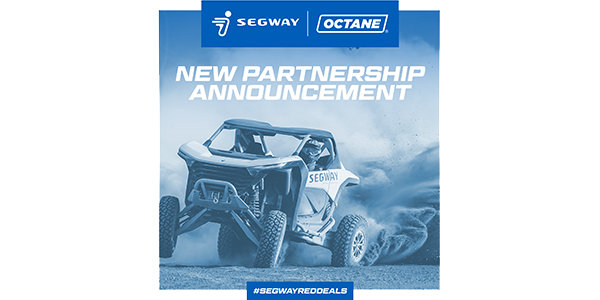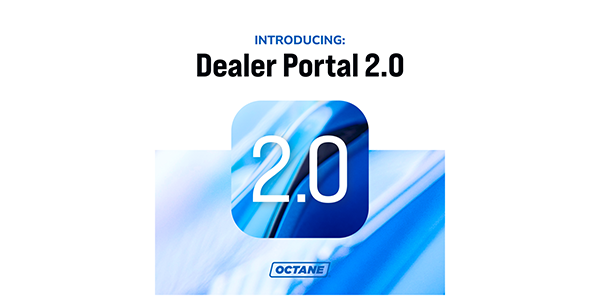With the announcement last month that Kawasaki had renewed its agreement with Synchrony to continue handling the OEM’s financing arm for dealers around the country, we thought it would be a good time to sit down with company execs to see how it can help dealerships extend terms to their customers, whether you’re a Kawasaki dealer or not.
MPN spoke with Keith Mait, SVP and general manager of Payment Solutions at Synchrony, about how the financing program benefits Kawasaki’s dealers and their customers and other solutions the company offers to dealers who are looking to add more financing power.
As noted in the Synchrony press release, enrolled Kawasaki dealers have 24/7 access to Synchrony’s mobile-responsive Business Center technology for enhancing the consumer credit process. Kawasaki dealers also have access to Synchrony’s Advertising Center, which provides customized in-store and online marketing collateral, including signage and banners.
Synchrony is a considerable player in the financial services sector and works with some of the country’s largest retailers, including Amazon, Lowe’s and the health care sector, with their Care Credit services and other segments. The company understands retail and the financing needs of small businesses – especially those with product offerings not easily paid for in one lump sum out of your customer’s checkbook.
No time to read? Listen instead!
MPN: Thanks for joining us today. Was Kawasaki your first foray into the powersports market, or have you been involved with powersports for a long time?
KM: Our powersports business evolved about 30 years ago. And what’s unique about it compared to the other parts of Synchrony is, we utilize an installment loan product rather than a revolving card product to help consumers finance the purchase of these vehicles. It looks and acts a lot like an auto loan, which many people are familiar with, that amortizes down. It gives people equity in their products. They’re not faced with the kinds of consequences or circumstances that might come with credit card interest confusion. It’s a very simple installment loan that offers fixed payments over time that emphasizes affordability.
MPN: With powersports dealers, for the most part, they’ve got a lot of high ticket items. It’s not just the bikes/ROVs; we’re talking tires, gear, service, things like that. And also, the demographic of a typical powersports consumer tends to be younger. Although, the average age of a motorcycle rider is around 50 now, which is crazy. But for the most part, ATV/UTV riders are younger. They may not have $20-30,000 to drop on a toy unless they can use financing.
KM: You’re exactly right. I think we’ve seen a lot of energy and resources invested by the OEMs in taking that age down and diversifying the consumer base. I remember very vividly, I was at a Polaris dealer event a couple of years ago, and Scott Wine, who was the CEO of Polaris, stood up on stage and said, ‘Let me tell you about our consumer base.’ And he put up three pictures and three words. It was ‘old, white, men.’ That was a problem they saw that needed to be overcome.
MPN: The OEMs have always wanted to appeal to the many different segments of the population and other cultures. And in recent years, they have made more progress.
KM: I see it a lot more now than I did five years ago when I joined Synchrony from GE, in that even when you look at the advertisements and the imagery used now, it’s women, it’s people of color, off-road imagery, it has families in it. You’ve got moms taking their kids out. You’ve got a side-by-side with four people in it. You commented about when they’re buying the vehicles themselves, there’s other stuff they need to buy. You can’t buy a side-by-side without buying helmets and gear. Many powersports consumers are usually buying gloves, jackets and boots when they buy a new vehicle.
What we’ve tried to do is create an environment that is financed with Synchrony. We make accommodations in our credit lines to allow you to buy those things with the vehicle – to bundle them and add them to the sale. You can include the parts and garments and protective gear – up to a reasonable amount, not unlimited credit lines – but credit lines that are reflective of who you are as a consumer, as well as what you’re trying to accomplish in that purchase.
MPN: Pre-owned is an important segment for dealers because they can make better margins and get newer customers to eventually move into a new unit. Do you offer anything for pre-owned financing?
KM: We will finance pre-owned back about six model years. We’re not going to go back to the beginning of time, but we try and follow the resale value. We understand the collateral risk, and we pay attention to auction values. We partner with auctions on a variety of things as well. So we spend quite a bit of time analyzing our pre-owned loans and populations. Used is critical.
The other thing that we talked about being able to buy at the time of purchase are maintenance programs, warranty programs, tire and wheel insurance; those are all big pieces of the purchase as well, to protect the consumer and offer the flexibility, and those exist on used as well. You pointed to used being a big profit center. I mean, it is a big profit center. Margins on pre-owned are rich, which is a big reason we can include extended warranties, which people still want the comfort of having even on a used product.
MPN: What kind of credit tools do you have that dealers can use and take advantage of on the backend?
KM: We work with hundreds of thousands of small businesses every single day. And so, building and operating simple and effective credit tools is critical. We’ve got robust technology teams that are always trying to make our small business tools easier to use and more effective or arrive at decisions faster to create more opportunities.
I’ll give you a sense of what the “wing-to-wing” process looks like for powersports dealers so you can visualize it. All powersports dealers can access Synchrony through something called Business Center. And it doesn’t matter if you have one program with Synchrony or 12 programs. You’re going to the same place every time. And the process is identical every time. So, if someone comes in and says, I want that Kawasaki. And then they change their mind – no, I want that Polaris. Nope, I changed my mind. I like that Sea-Doo, it doesn’t matter. The salesperson isn’t having to think about how many different systems I have to mess around with to close the sale.
We have the same motivation as the dealer. Our job is to help them sell something. And so, if I make it more complicated, they’re just going to choose the easiest path forward, the path of least resistance. You log into the Business Center and there’s an arrow and a dropdown box and you’ll choose the Kawasaki program, Suzuki or Polaris, etc. And once you make that selection on the backend, things become more customized. We work with Polaris and Kawasaki and all of our 12 OEM partners.
We load in all the OEM’s makes and models and limit the amount of information dealers have to type in. Things have become more pre-populated and more automated. Once the dealer goes through that first wave, that application – who are you, and what do you want to buy? We have automated decision-making that’s running in the background that provides us a decision in three seconds. And that decision is either going to be approved, declined or pending. Pending will show up if there’s a typo in the address field that doesn’t match the credit bureau information.
We’ve got a dedicated team of about 20-25 merchant services underwriters that as soon as a pending comes out, a red flag pops up on their desktops, and they begin the process of remediating that in less than 10 minutes. So we’re not making anybody wait very long for this because we know that if you don’t like the experience you’re having at that dealership, you’re going to go somewhere else the next time.
Once everything gets finalized, printed and signed, the dealer wants to know how quickly can I get paid? As soon as the dealer submits their documentation to us, which they can do via digital upload, we return funding in most cases within 48 hours, if not 24. Dealers don’t have to wait weeks to get paid. They’ve got their own business loans that they may have to deal with. Getting cash back into their hands is critical because they’re small businesses. Cash is their heartbeat.
MPN: Back in 2009, when the financial bubble burst, financing became very difficult to find, especially in the powersports world due to subprime-type customers. How has financing become more available now for these types of consumers?
KM: That’s a great question. I can tell you that the world is so different from what it was 12 years ago, and our systems and the amount of information available to us to analyze a consumer are light years from what it was. We’ve tried to evolve our systems to evaluate the creditworthiness of these consumers using more than just a credit score. Credit scores don’t tell the whole story. We’ve tried to invest in several other databases and information sources that tell us a little bit more. And that’s made our decision-making process a lot more judicious because someone, for example, who might have a credit score that that might be near-prime, or maybe even subprime, they may pay their bills on time.
For more information about Synchrony, visit synchrony.com.














